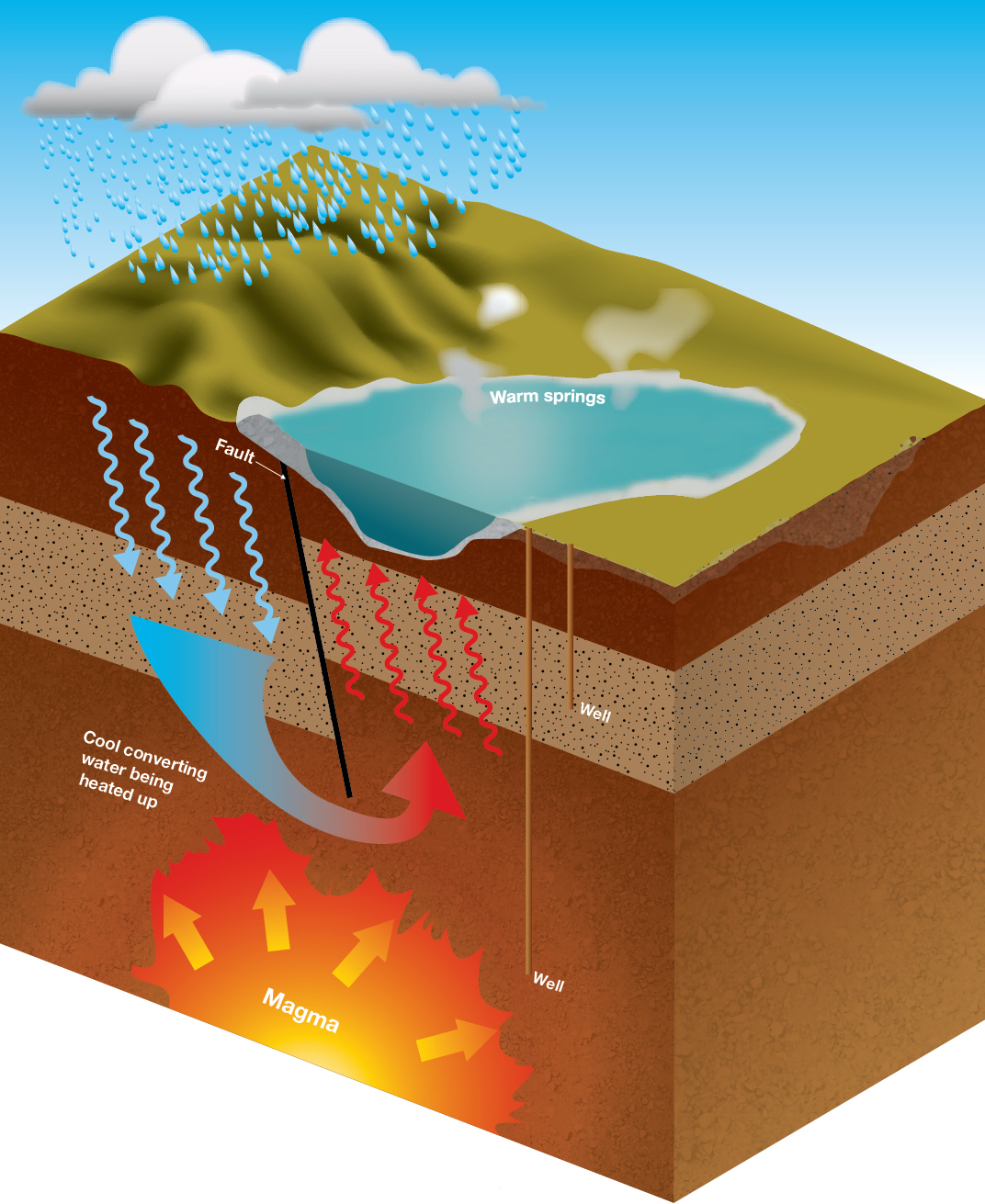Geothermal energy is renewable heat from the Earth, created when the planet formed.
Groundwater percolates downwards towards the deep heat source and becomes heated to high temperatures, before buoyancy returns these fluids to shallower levels, or even the surface. In the upper few kilometres of crust, faults and fractures in the rock act as natural channels – like the plumbing in a house moving water around.
Permeable rock formations store some of the rising fluids underground, forming geothermal reservoirs of heat.

Drilling into these reservoirs is a renewable, reliable and secure source of energy. In the Taupō Volcanic Zone, at around 2.5 km deep, a geothermal well can produce water and steam at about 300°C, resulting in about five megawatts of electricity generation – enough to power over 3,000 homes, or to run a large-scale timber drying kiln.
To understand a geothermal system and assess its energy potential, geoscientific measurement, interpretive techniques, and exploratory drilling and testing are undertaken (see: exploring for geothermal resources), and mathematical models are produced.
Supercritical resources are supercharged geothermal systems
Current geothermal wells in New Zealand tend to be at depths between 1.5 km and 3 km. We are targeting supercritical conditions at depths greater than 4 km, where magmatic heat encounters permeable rocks (but supercritical is NOT magma), allowing superhot fluids to circulate. These fluids have a higher heat content and lower density than liquid water, so have the potential to generate much more energy than the same volume of a conventional geothermal fluid — supercritical fluids at 400°C contains about five times as much energy as water at 200°C.